First, blog business update: OK, I am totally mystified by the MailPoet App on my Blog that sometimes sends me an email notification when someone comments, but sometimes doesn’t, and, moreover, when I reply to the email sometimes it goes to the person submitting the comment and other times it goes to me. Go figure? Software is supposed to be objective and consistent, right? But I sometimes I think software has moods and opinions. Anyways, I have a new tatic that should allow me to reply to you directly via email, so I shouldn’t have to reply via the comment section in the post and you shouldn’t have to go to the comments section in the blog to find my reply.
After leaving the village of Shimoni on the southern-most coast of Kenya, we crossed the border into Tanzania (pretty painless, except it took 1.5 hours due to all the paperwork required at this particular border crossing), and headed to our first destination, the Amani Nature Reserve, located in the Eastern Usambara Mountains in the far northeast of the country.
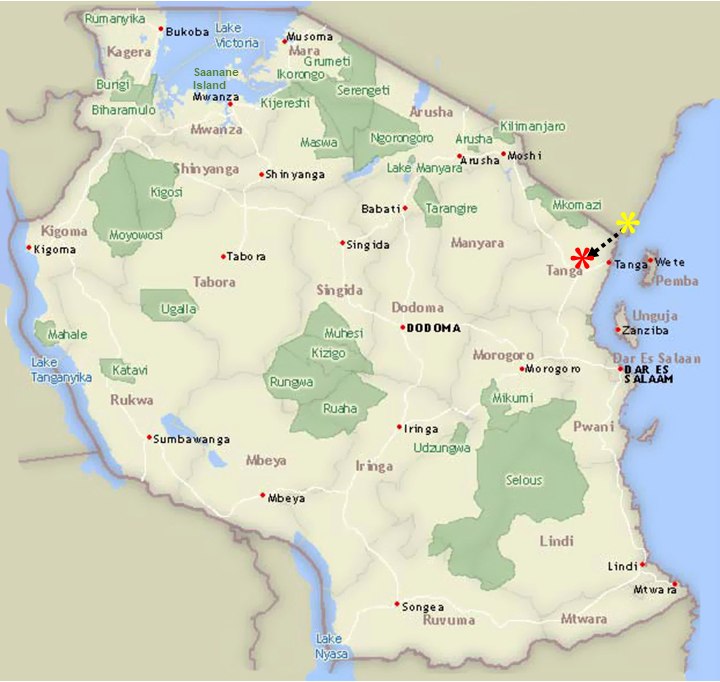
The Amani Nature Reserve, encompassing 32 square miles, was established in 1997 in order to preserve the unique flora and fauna of the Eastern Usambara Mountains. These mountains form the northern portion of what has been termed the Eastern Arc Mountains located in eastern Tanzania and southeastern Kenya. The Arc is an archipelago-like string of forest-capped mountains heavily influenced by the Indian Ocean climate, so they receive a lot of rainfall. The result is highly productive and diverse forest. The trees here for a dense canopy that rises 200 plus feet off the forest floor. Unfortunately, most of the mountains within the Arc have been deforested by local communities, so there are very few remnant montain forests left within the Arc. Udzungwa Mountains National Park (which we visited with Phil, Mary, Bill and Rick two years ago on our Tanzania trip) and Amani Reserve are two of the largest remnant montain forests within the Arc.
The East and West Usambara Mountains, home to the native Shambaa people, are considered a biodiversity hotspot and is listed as one of the top 12 bird-watching locations in the world by Bird Life International, and the Reserve is recognized as a Man and Biosphere Reserve by UNESCO. The Reserve’s rich biodiversity is partly because it includes an exceptionally wide range of ecosystems, including tall sub-montane evergreen cloud forests and deciduous to semi-deciduous lowland forests and numerous endemic species, including a dozen species of African violets, a dozen or so species of chameleons and numerous other species. Amani is perhaps most renowned for its bird diversity and number of endemics that draws hard-core birders, mostly from the states and U.K. We learned that eco-tourism has become the Reserve’s sole means of generating revenue and almost all of that is from international birders. It’s worth highlighting that birders do indeed provide a lot of support for international conservation, at least indirectly, through their efforts to see bird species. I picked up an additional 22 new bird species (see list below).
We camped at Amani Forest Camp next to the headquarters of the Reserve. Nothing spectacular about the campsite to note. For the first night we simply parked the Green Dragon on a dirt patch next to the cottages since there were no guests in the cottages and the “campground” was occupied by a group of students from the UK. In fact, it was quite noisy and busy all day and evening with people and motorcycles streaming by making noise. Oh, and let’s not forgot the incredibly irritating muslim prayers broadcast over loud speakers at pretty much all hours, including late into the evening and starting up again at 4:00 am. Here’s our first nights not-so-great camp site:
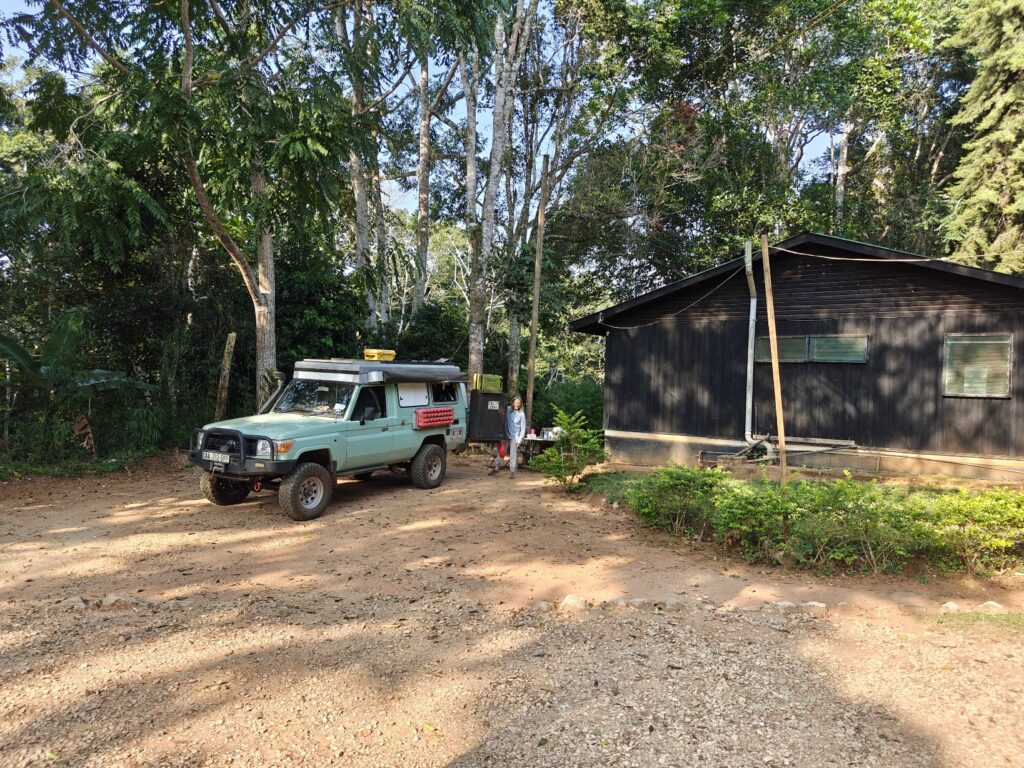
Fortunately, the school group left the following morning and we moved to a grassy patch on the other side of the cottages away from the road; also not a great location, but a bit less noisy. Here’s our new site:
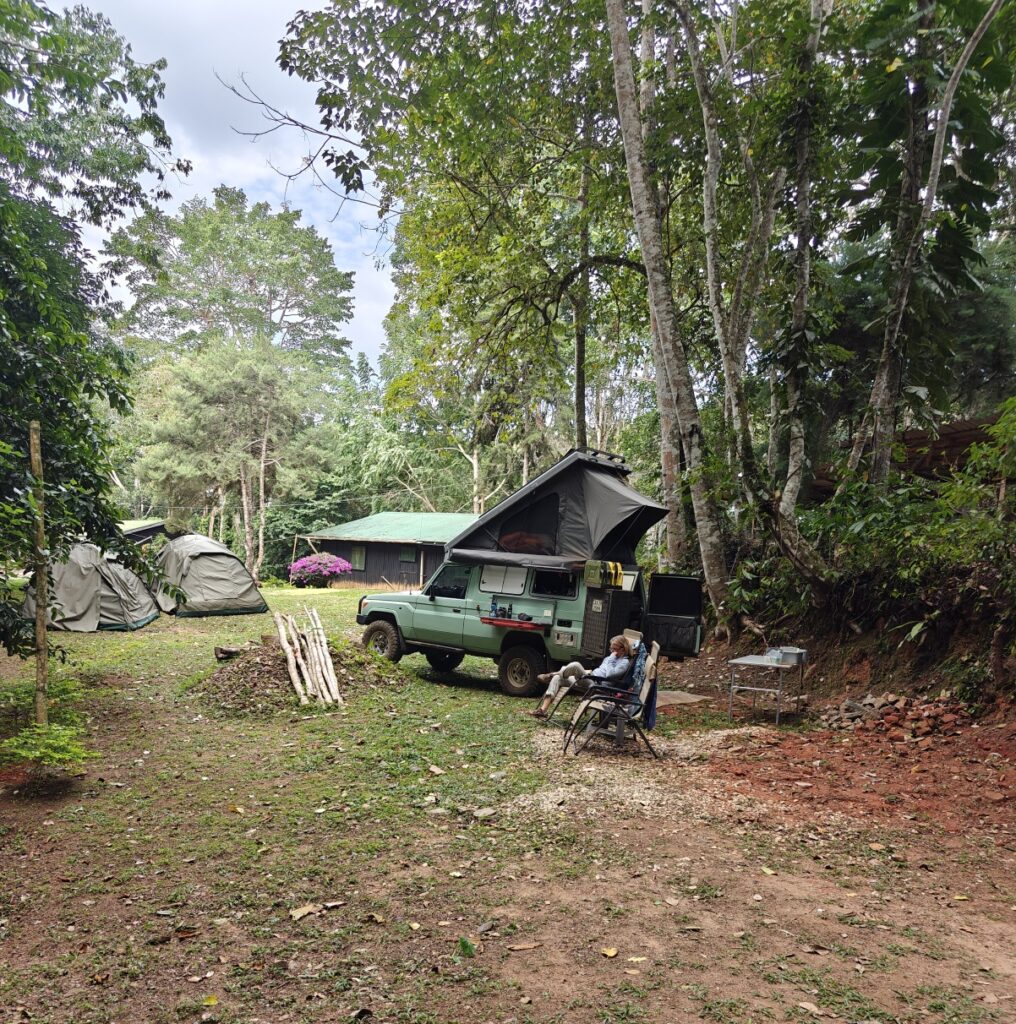
However, we didn’t go there for a great campsite – although that is always very welcome – but instead went to the mountains for a change in environments, having been in grassland and bush savannah and hot and humid coastal tropical lowlands for the past month, to stretch our legs on the many trails, and see some new wildlife species, as there were many new ones to see. One of the really cool new species we saw was the raven-sized Silvery-Cheeked Hornbill. This bird was all around our campsite and all over the forest everywhere we hiked, flying this way and that in the canopy, making a ruckus, but never allowing me to get a picture worth showing, so I am going to show you this picture from the internet:
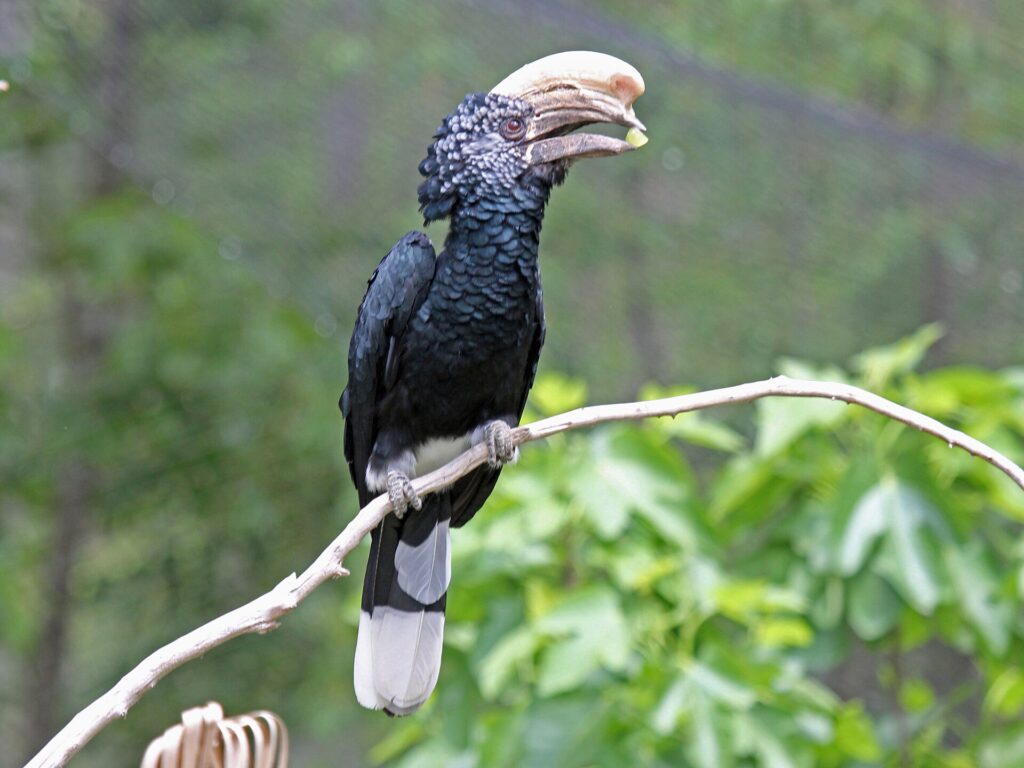
On our first full day, in the morning we hiked to a couple of different waterfalls (with a guide which was required) and along the way stopped at a tea farm and a local (i.e., small-scale) spice farm. Here are a few photos:
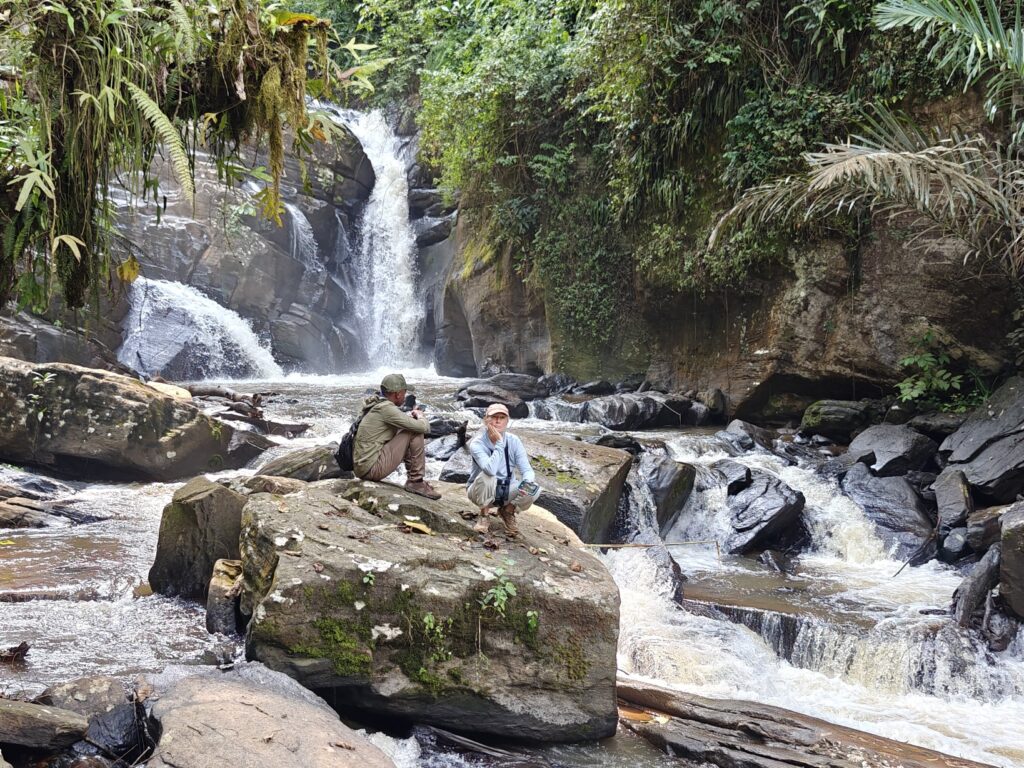


In the evening, we hiked up to a viewpoint of the mountains for sunset and then walked back in the dark. The highlight of the night hike back to camp was spotting three different species of chameleons (and lots of them). Note, I didn’t spot any of these; the guide somehowe did, but it completely baffled me how (Nancy was much better at seeing them once the guide pointed them out):

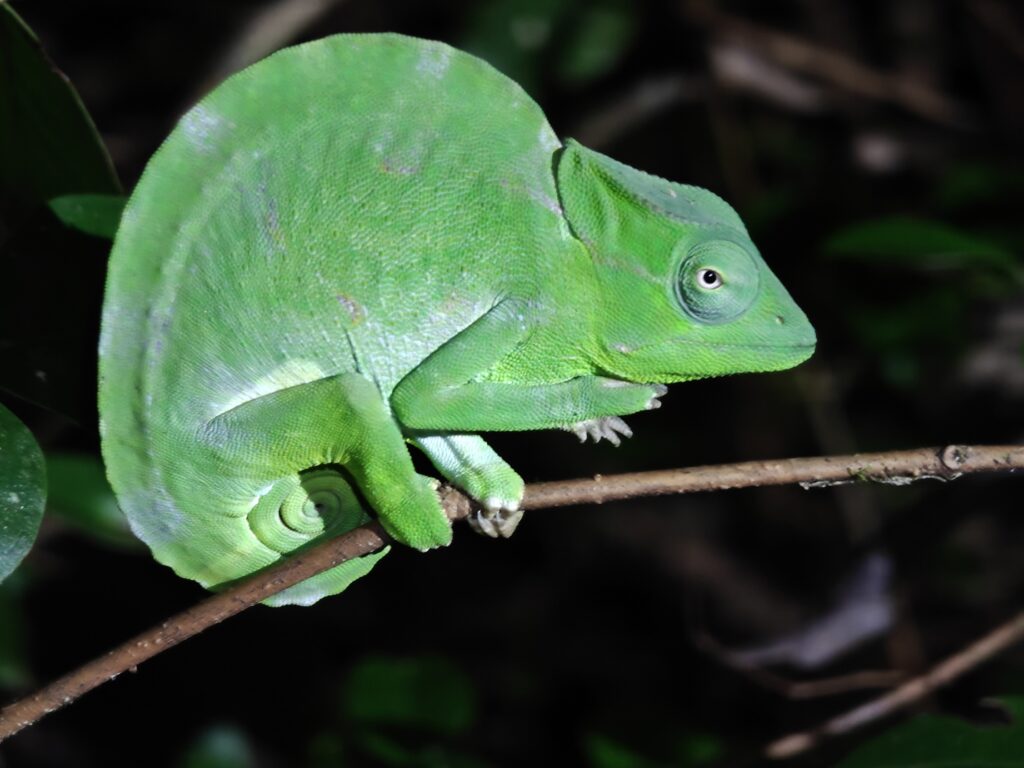
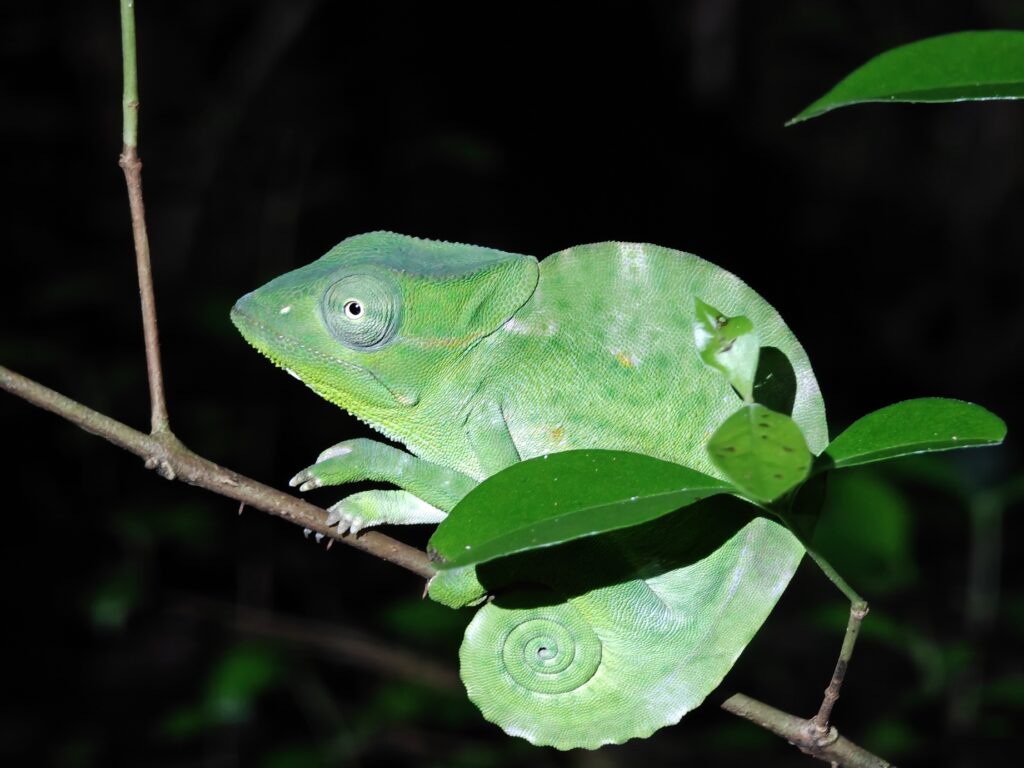



On our second full day, we went birding with local guide in the morning and went looking for African violets (flowers) in the evening. Here are a few photos:

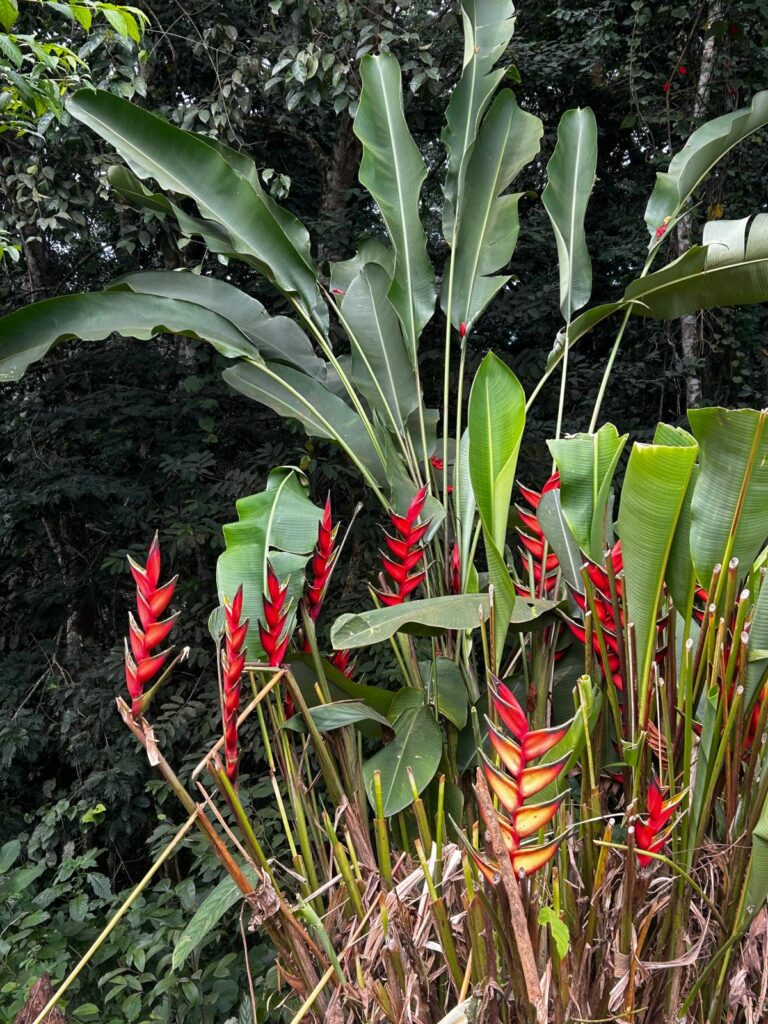

And for the action lovers, here’s a composite video of our visit to Amani Nature Reserve that includes a footage of our drive, but most of the footage is of our hikes to the waterfalls, the tea farm, the small spice farm and to see African violets, with a little soccer thrown in for good measure, but no wildlife in this one:
Amani Nature Reserve composite (15 minutes)
Here’s a 43 second clip of our birder guide that didn’t make it into the composite before I posted it, in case you are interested:
OK, we are off to even higher elevations in the western Usambara Mountains. See you there!
New Species:
- Silver-cheeked hornbill
- Green-headed oriole
- Black sawwing
- Fisher’s turaco
- Cabanis greenbul
- Yellow-streaked greenbul
- Little greenbul
- Black-fronted bushshrike
- Short-tailed batis
- Pale batis
- Red-tailed rufous (ant-) thrush
- Green barbet
- White-eared barbet
- Southern citral
- Banded sunbird
- Amani sunbird
- Collared sunbird
- Waller’s starling
- East coast (Zanzibar) boubou
- Common waxbill
- Marsh warbler
- African dusky flycatcher

21 new species of birds! That is very exciting. Your birder guide is cute. And I’m glad you had one for your night walk to point out stuff and get you back to camp. Seems like a nice way to enter Tanzania minus all the paper work. Also happy you guys can hike again. This trip has so much variety in it.
I’ll wait till Yaron gets home to watch video:)
Nice change of scenery (probably weather too) up in the hills with the spices, waterfalls and flowers. Very interesting how the spices are grown. never would have thought on little bushes/trees. Were you able to purchase some? Great video/pictures as always.
looking forward to the next blog.